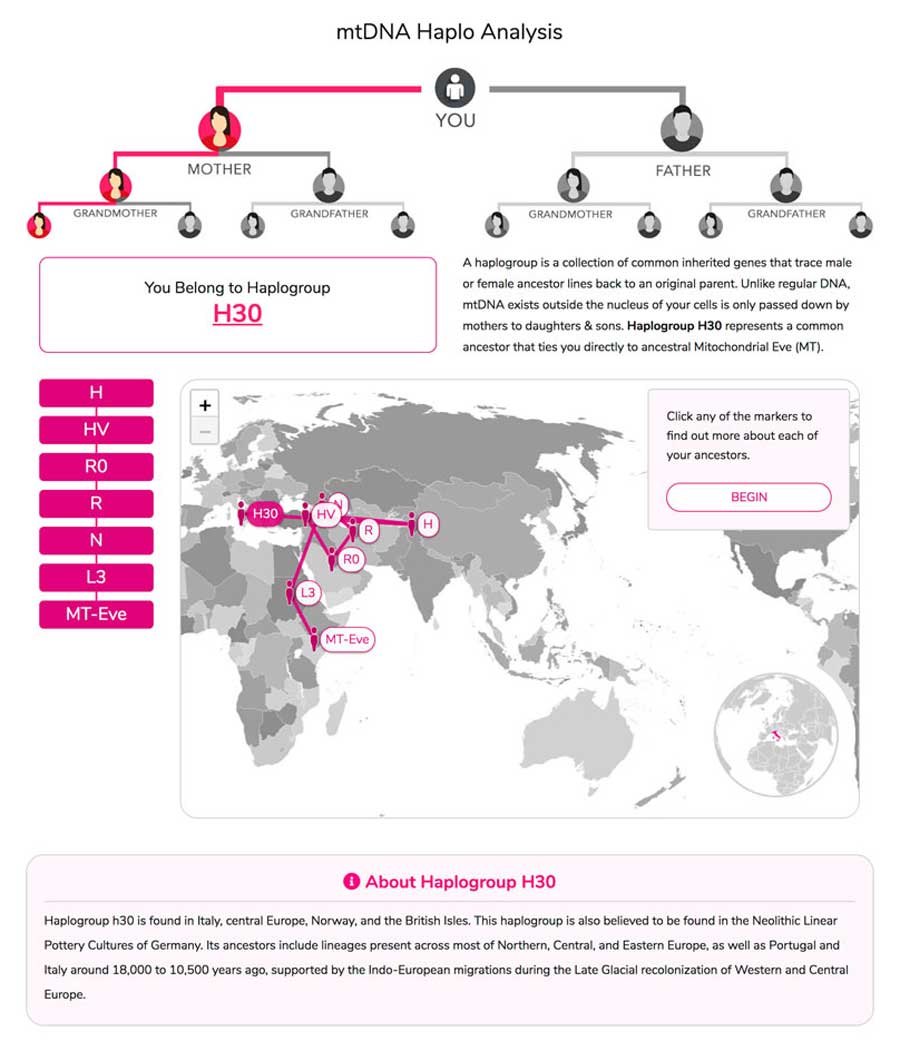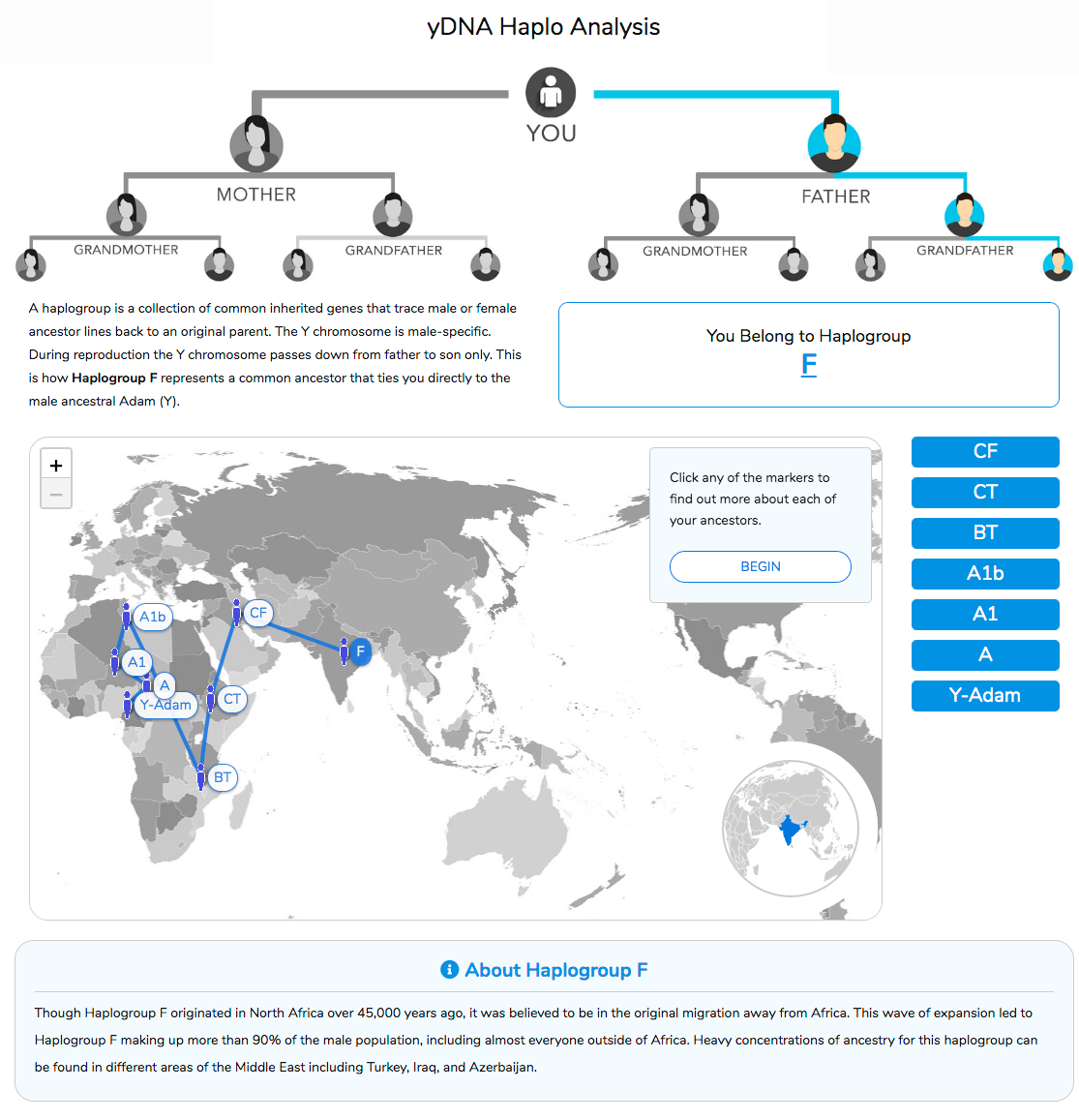
I have a surprise revelation for you…
You have non-human DNA in your cells.
It’s okay, we all do… And we get it from our mothers.
If you’ve read any of our other blogs in this “CRI Genetics DNA Test Education” series, you’ve seen a whole lot of information about chromosomes.
Your chromosomes are little packets of DNA. ALL of your chromosomes exist within the nucleus of your body’s cells.
However, there’s another type of DNA in your cells that exists outside of the nucleus…
And it’s not even human.
It belongs to mitochondria, which are helpful little organelles that assist your body with a number of basic processes, especially when it comes to energy.
Mitochondrial DNA (mtDNA) can be found in ALL of a woman’s cells, including her eggs. Since mtDNA is contained in every woman’s eggs, every woman who has children passes this unique DNA on to her children.

Men, women, and everything in between inherits mtDNA from their mother – and ONLY their mother.
A man’s mtDNA (which is really their mother’s) never enters their partner’s egg during conception, so they don’t pass their mtDNA onto their children.
Now here’s what’s extra-special about Mitochondrial DNA…
Most ancestry reports are based on autosomes. Autosomes are non-sex chromosomes – so basically all the chromosomes that aren’t X or Y.
Autosomes change quite a bit from generation to generation as a mother’s and father’s DNA mix and recombine…
Mitochondrial DNA, however, barely changes at all! From one generation to the next, it remains almost identical.
This allows the scientists at CRI Genetics to trace your direct maternal ancestry back 100,000 years to the earliest known woman in human history. She is sometimes referred to as “Mitochondrial Eve.”
Mitochondrial DNA does change a little bit over time, but it’s a very slow change. It changes just enough that scientists can recognize many different branches on the human family tree and still connect them all back to Mitochondrial Eve. It takes about a thousand years’ worth of generations to develop a new branch.
Your branch is your “Maternal Haplogroup.” It’s a link between your mother’s side of the family and all of human history.
If you purchased a Maternal Haplogroup Report from CRI Genetics, you’ll get information about your haplogroup along with an interactive map that traces your maternal ancestors’ path throughout the history of human migration.
But wait, what about paternal haplogroups?
Paternal haplogroups follow a similar concept…
However, we have to return to a discussion of chromosomes in order to understand them. In this case, we have to talk about the Y-Chromosome.
Every man who has children passes his Y-Chromosome on to his son. Like mtDNA, the Y-Chromosome remains almost identical from one generation to the next. Also like mtDNA, it changes just enough that scientists can recognize many different branches on the human family tree and connect them back to the earliest known man in human history. He is sometimes referred to as “Y-Adam.”

Your branch on this paternal tree is your “Paternal Haplogroup.” It’s a link between your father’s side of the family and all of human history.
The Paternal Haplogroup Report at CRI Genetics is very similar to the Maternal Haplogroup Report in that it gives you information about your haplogroup along with an interactive map that traces your paternal ancestors’ path throughout the history of human migration.
Unfortunately, Paternal Haplogroup Reports aren’t available for women. We at CRI Genetics wish it was possible, but women don’t have a Y-Chromosome.
As of right now, the only way for a woman to get a Paternal Haplogroup Report is to have her father or brother (with a shared father) take a DNA test. Uncles and cousins who share a paternal grandfather would also work.
BONUS EDUCATION: About those “Famous People” reports…
One of the cool things about haplogroups is that there are millions of people around the world who have the same haplogroup as you do…
That’s what a “haplogroup” really is: It’s a GROUP of people who share the same DNA.
Now, when there are millions of people around the world who share your DNA, there are bound to be some famous people…
A CRI Genetics Famous People Report shows you which famous people you share DNA with.
They may not be “relatives” in the usual sense of the word, but they are definitely somewhere on your extended family tree nonetheless. Being in the same haplogroup means you share a common ancestor at some point in your family histories. They’re most likely VERY distant cousins, but closer relations are possible.
That’s still pretty cool information to find out, if you ask me.
If you're a CRI Genetics customer, you can discover your Haplogroup and Famous People Reports in your CRI Genetics account right now.
Not a CRI Genetics customer yet? Go check out any current promotions and find out how you can get your Haplogroup Reports (and many more).